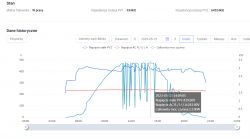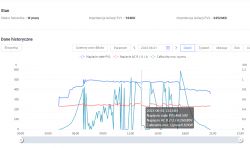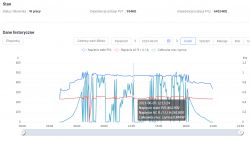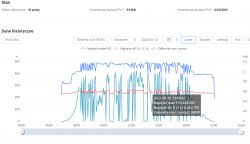Wawrzyniec wrote: It's enough if you load this phase with turned off inverter. If there is a large voltage drop, the installation will be damaged. As the inverter will work, after loading this phase with a heater, you probably won't give anything to the grid anyway, because the inverter will work for the heater, and the interpretation with the inverter off is more obvious.
Today I measured the voltage in the AC box of the inverter on the terminals of the cable going from the box to the bidirectional meter in two variants
1. Inverter disconnected from the box
- voltage without load: 232 - 235 V
- voltage with a load of 1000 W (farel set to 1000 W connected to the socket connected to the terminals of the box cable going to the meter): 230 - 233 V
- voltage with a load of 2000 W (farel set to 2000 W connected as above): 229-231V
2. 130 W inverter connected to the box (cloudy morning)
- voltage without load: 232 - 235 V
- voltage with a load of 1000 W (1000 W battery connected to the socket connected to the terminals of the box cable going to the meter): 234 - 235 V
- voltage with a load of 2000 W (2000 W coil connected as above): 230 - 232 V
As you can see, the load on the line - the cable connecting the AC connection box of the inverter with the bi-directional meter does not cause a large voltage drop:
- max 5 V with the inverter disconnected
- max 5 V with connected inverter
These measurements would indicate that the inverter box - meter line does not cause too high a voltage drop (max 5 V). The length of this line is max. 6 m. On the other hand, the inverter, with the power of 1000 W generated on Sunday, boosted the voltage in the AC box of the inverter to 260-263 V from 237 V because this voltage was more or less in the box when the inverter restarted (it did not generate power). This would correspond to a voltage drop of 23 - 26 volts. It seems that it is not too high line impedance that is causing the AC box to be over-voltage, but inverter failure or something else.














